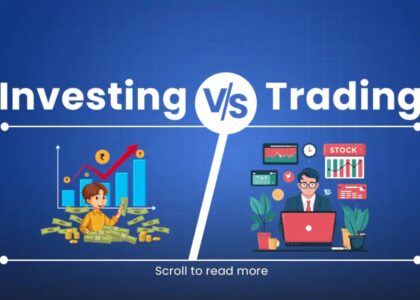Building wealth and maintaining a solid financial future both require investing. But for newcomers, understanding the world of investing may be intimidating.
One of the critical steps in making informed investment decisions is evaluating potential investment opportunities. By employing effective strategies for evaluation, investors can assess the viability and potential returns of various investment options.
A methodical approach to assessing investment prospects is advised by Someshwar Srivastav, a specialist in financial planning and investment analysis. With his guidance, investors can make well-informed decisions and maximize their chances of success in the investment landscape.
Different types of Investment Strategies
There are five different types of investment strategies:
- Value Investing
- Growth Investing
- Income Investing
- Socially Responsible Investing
- Small-Cap Investing
Value Investing
- Risk Minimization: Typically, investing in equities stocks has a significant level of risk. However, using the value investing approach, investors identify undervalued businesses and purchase strong shares at a discount, lowering the risks. The margin of safety is used to lower the risk. Investors make large cash gains when these shares are sold at or above their intrinsic value.
- Significant Returns: Because the margin of safety is used, the returns are often higher over the long term than the average return.
Growth Investment
Income Investing
Socially Responsible Investing
The social and environmental impacts of investments are considered while making them under this investment approach. Investments are typically made in businesses that pursue socially aware goals like environmental sustainability, social justice, alternative energy, etc. Investments are not made in businesses that negatively affect society, such as businesses that produce cigarettes or provide gambling services, etc.
A socially conscious investment approach has two main objectives: financial gain and social impact.
- A socially aware investment might not provide excellent profits, and an investment in a firm that generates high returns might not uphold socially conscious values, therefore one might not be able to achieve both at once.
- As a result, a potential investor must study the fund’s brochure to ascertain the investment philosophies of the portfolio manager.
Small-Cap Investing
- Growth Potential: Most large-cap corporations began as startups. The fresh, rising businesses introduce novel goods and services to the marketplace and, occasionally, even develop totally new markets. Unlike large-cap corporations, these businesses may grow since their overall worth is lower.
- Mutual fund investment restrictions-Mutual funds often make substantial investments that small-cap enterprises cannot afford. The portfolio manager must purchase at least 20% of the shares for the investment to influence the performance of the fund.
- Due to regulations put in place by the Securities and Exchange Commission, mutual funds are no longer able to take such prominent positions, providing ordinary investors the benefit of selecting potential firms before institutional investors.
- Small-cap Value Index Funds: Small-cap value companies typically go overlooked by stock market investors because they are inexpensive, which results in higher returns. Investing in the top small-cap value index funds can increase returns.
Value investing was a novel approach to stock investment that Benjamin Graham created in the 1920s and which Warren Buffet popularised. One needs a thorough grasp of the stock market to use this method since it requires extensive study.
When using this method, investors look for equities that are trading below their real value. Undervaluation and overvaluation are two possible scenarios. When a stock’s trading price is greater than its inherent value, this is referred to as overvaluation, and when it is lower than its intrinsic value, it is referred to as undervaluation.
Investors buy stocks when they are inexpensive and sell them when their inherent worth or a higher price has been reached. The investor must exercise patience and wait until the share price increases, which might happen in a year or over some time.
The benefits of value investing are as follows:
This tactic emphasises capital growth. Investors who use this method typically invest in the stocks of businesses that have indicators of above-average profits growth in comparison to the market or their industrial sector.
These businesses often have a high risk since they are new, tiny, and developing with big potential rewards. Most growth-stock businesses reinvest their earnings rather than providing dividends to shareholders because these investors seek capital growth.
Stocks are traded at a high price/earnings (P/E) ratio if the firm is thought to have a higher chance of succeeding, in the hopes of higher stock prices in the future as they are anticipated to perform better. These businesses typically have patents or access to technology that provide them an advantage in the market and guarantee long-term success.
This tactic aims to produce a consistent flow of money. These portfolios often contain bonds, equities, exchange-traded funds (ETFs), real estate investment trusts (REITs), and other types of investments that generate the largest passive yearly income. In most cases, the revenues are minimally risky dividends, bond yields, and interest returns.
The benefits of income investing are as follows:
A supplement to fixed income: Using one’s own assets to generate additional income is a great approach to increase one’s fixed income.
Potential for capital stock growth Over the long run, income investment techniques produce the possibility of capital stock growth, which inevitably increases one’s wealth.
The term “small cap investing strategy” describes investments made in tiny firms with market capitalizations between $300 million and $2 billion or less. These are dangerous investments.
The attractiveness of these companies rests in the fact that, in contrast to large-cap stocks, which have high prices because they are well known. Investors typically steer clear of these stocks owing to their riskiness and the limitations on institutional investment.
The fact that these equities are extremely volatile and challenging to trade means that an investor must be well-versed in stock market investment.
The benefits of small-cap investing are as follows:
Conclusion
Identifying and implementing the best investment strategies for long-term financial success is crucial in securing a prosperous future. While there is no one-size-fits-all approach, certain principles can guide individuals towards making informed investment decisions.
Seeking guidance from experts in the field can significantly enhance the evaluation process. With his vast experience and expertise, Someshwar Srivastav provides invaluable insights and guidance to investors, helping them navigate the investment landscape with confidence.









